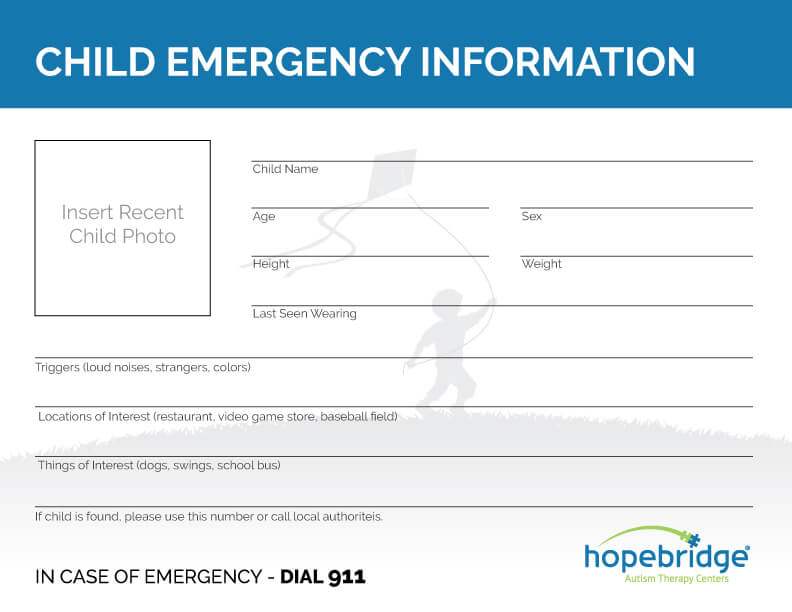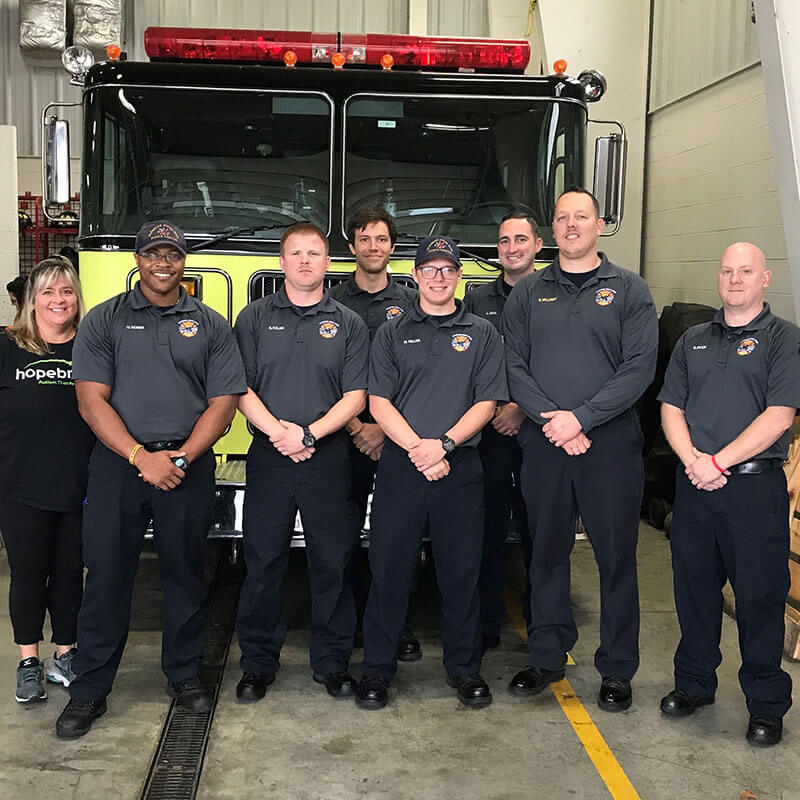How to Prepare your Family for Wandering Emergencies
November 19, 2019
November 19, 2019

The concern is real. Many families who have children with autism spectrum disorder (ASD) worry daily about their children wandering off without them. “Elopement” struggles are delicate, difficult and serious, and we know it can feel helpless at times.
Whether it happens out in public or starts at home, families can proactively prepare to handle elopement in the unfortunate case this worry becomes a real-life emergency. While this situation feels like a nightmare come true, there are a number of steps parents can take now to not only minimize the likelihood of a lost child, but also increase the chances for a successful search if this type of scenario does occur.
To shed light on the topic and provide actionable tips for families, we turned to someone who is regularly involved in rescue situations, Indianapolis Fire Department Chief of Special Operations Kevin C. Jones.
“The best advice I have for families who struggle with elopement is to add layers of protection,” said Chief Jones. “No single tool will guarantee safety and each person requires different aids. It is important to evaluate your own situation and act preemptively to determine which opportunities are a good fit for your needs.”

The best advice I have for families who struggle with elopement is to add layers of protection,” said Chief Jones.
The “layers of protection” can vary between circumstances, but there are a few specific proactive and reactive measures Chief Jones recommends parents consider:
1. Compile pertinent information.
The more information you can provide first responders, the more efficiently they can perform the search. This can start today. Set aside a current photo and key details they can use in their search. In addition to a current description of your child and potential contact information, think about other notes that are more personal. For instance, are there specific interests they are drawn to, such as dogs, swings, elevators or garbage trucks? Are there specific places your child likes to go, like the nearby pond, playground, video game shop or baseball field? This will help the search team key in on certain areas. Also jot down any triggers or sensitivities to better prepare first responders once they come in contact with your child. You can also call your local fire department now as a precaution to let them know whether your child is prone to wandering, as well as any supports you have in the house to battle the challenge, such as extra locks. They can add this information to your home’s hazard file. Having this on file informs dispatch so they can relay the extra protection if and when there is a problem.

.
Download this free printable guide for quick and easy access to helpful information in the event of an emergency.
Having these details ready to go before there is ever an issue is beneficial, but it does not stop there. If you notice your child missing, be prepared to share even more information about your child and home. For example, how long have they been missing? Was there anything upsetting or exciting that may have led to them wandering off? What are they wearing? The team can push these details out to news outlets and social media in hopes someone in the community will spot and recognize them along the way.
2. Communicate with your neighbors.
Get to know your neighbors. Not everyone is comfortable doing this, but beyond building a sense of community, talking to your neighbors about your child’s autism diagnosis and challenges can pay off in the long run if your child wanders out of the home. The more information your neighbors know, the more likely they will be able to recognize when something is not right, especially if your loved one is nonverbal or has communication difficulties.

Introduce your child to paramedics, fire-fighters and police officers so they become familiar with their roles.
3. Expose your child to first responders.
If possible, introduce your child to paramedics, fire-fighters and police officers so they become familiar with their roles rather than attempting to hide from them during an emergency. Our teams are in place to serve the public, including your family, so feel free to use us as a resource. First responders are often involved in local events (such as Hopebridge’s first responder meet-and-greets), so introduce yourselves at community gatherings. If those events are too overwhelming for your child or you want more of a one-on-one introduction, call your local department to ask if you can arrange an appointment at the local fire house or police station. You can bring your kid to come see the trucks and meet the team in a setting that works for you.
4. Take advantage of support resources.
There are all kinds of tools available to help in elopement situations. Choosing which resources are best for your family is dependent upon each circumstance. Research the options and select those that best secure your home while maintaining a safe environment. Project Lifesaver is one option that is pretty robust. Designed for “at risk” individuals prone to wandering, the program includes locating technology and training courses. Search teams can use it to pick up radio frequency, but it relies on relatively close proximity. Another option is GPS technology through a watch, phone or another device like AngelSense that can be worn or attached to your loved one’s belongings. These are intended to provide real-time data and some even allow geo-fencing to let you know if he or she exited your noted perimeter. They each meet different needs at various price points and the solution that is right for you comes down to your family’s situation. If nothing else, even an ID bracelet can be helpful to provide identifying information for first responders conducting the search.
5. Minimize the amount of downtime to recognize there is an issue.
If your child is missing, tell your local authorities right away, especially if he or she is known to be a “runner.” Don’t wait until it could become a danger; call immediately if you suspect something is wrong. We will do our due diligence, of course, but it is better to call us and not need us than to wait two hours and lose valuable search time.

Hopebridge Autism Event with Local Heroes
“We will search for your loved one no matter what. If you have a 5-year-old missing, it does not matter whether he has autism or not, nor whether he has a device like Project Lifesaver. The diagnosis and extra tools often provide certain criteria we follow or resources we consult to help us be more efficient, but when you need us, we will be there. Either way, the search will happen to the best of our abilities, but the layers of protection are intended to get us there faster,” Chief Jones added.
Applied behavior analysis (ABA therapy) is also known to help reduce wandering behaviors. By determining the reasoning behind elopement and designing appropriate interventions for it, our Board Certified Behavior Analysts (BCBA) create personalized plans to decrease these types of challenging behaviors. If you are interested in taking another proactive approach to wandering, reach out to us to talk about the center-based autism therapy program at Hopebridge and how we can tailor it for your family.
*Informed consent was obtained from the participants in this article. This information should not be captured and reused without express permission from Hopebridge, LLC. Testimonials are solicited as part of an open casting call process for testimonials from former client caregivers. Hopebridge does not permit clinical employees to solicit or use testimonials about therapeutic services received from current clients (Ethics Code for Behavior Analysts 5.07-5.08; BACB, 2020). Hopebridge does not provide any incentives, compensation, or renumeration for testimonials provided by a former client or client caregiver.
Hopebridge in the News
November 05, 2024
Hopebridge Expands Access to Higher Education Through University Partnerships
Hopebridge in the News
December 08, 2020
Hopebridge Offers Families Affordable Payment Options for Autism Therapy Through CarePayment Partnership
Hopebridge in the News
January 06, 2017
Hopebridge Grows in Southern Indiana with New Autism and Developmental Delay Treatment Center in Evansville
Hopebridge in the News
April 20, 2018
‘Does My Child Have Autism?’ Hopebridge Partners with ‘Good Day Live’ to get Answers for Families